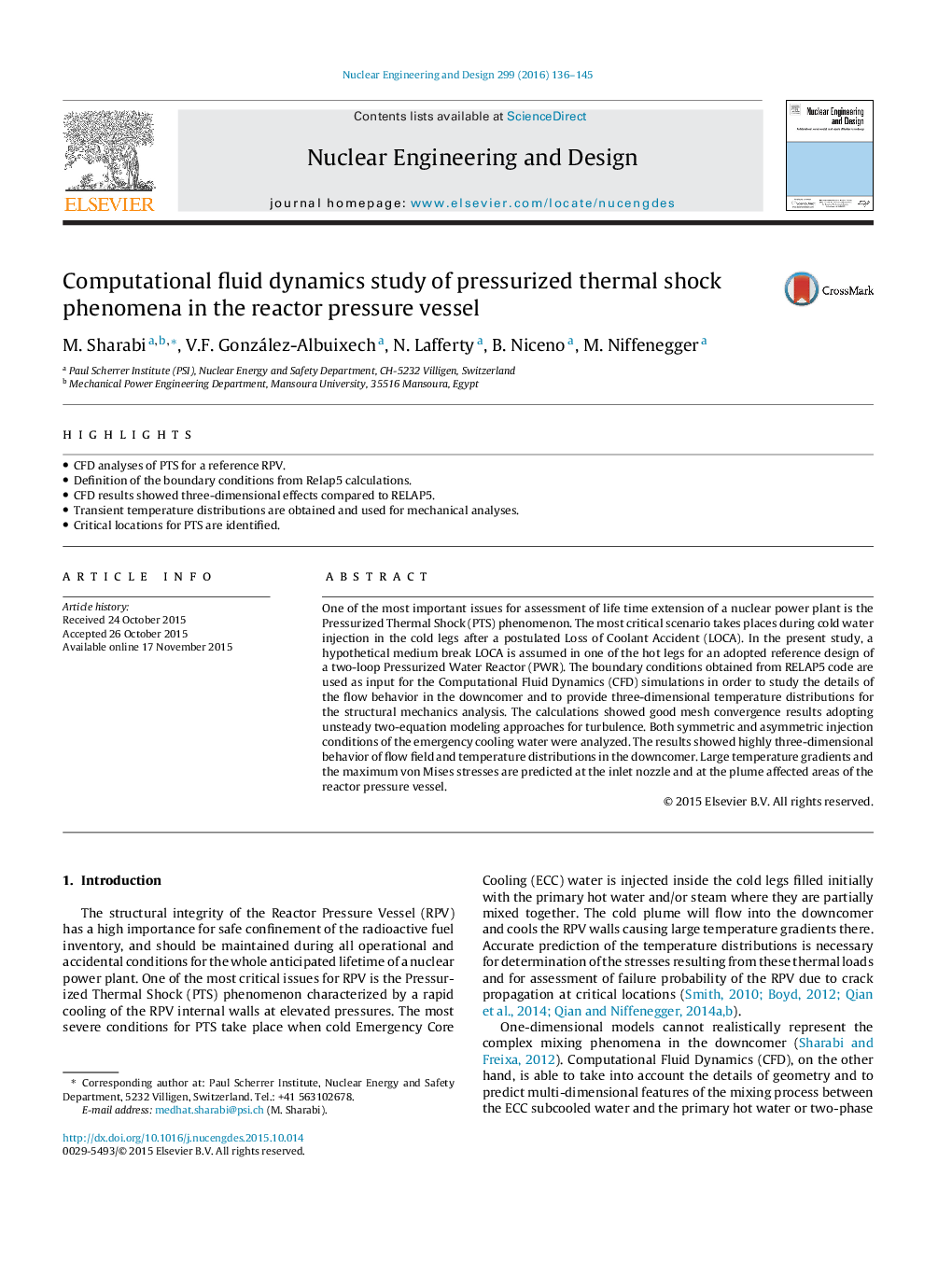| Article ID | Journal | Published Year | Pages | File Type |
|---|---|---|---|---|
| 296017 | Nuclear Engineering and Design | 2016 | 10 Pages |
•CFD analyses of PTS for a reference RPV.•Definition of the boundary conditions from Relap5 calculations.•CFD results showed three-dimensional effects compared to RELAP5.•Transient temperature distributions are obtained and used for mechanical analyses.•Critical locations for PTS are identified.
One of the most important issues for assessment of life time extension of a nuclear power plant is the Pressurized Thermal Shock (PTS) phenomenon. The most critical scenario takes places during cold water injection in the cold legs after a postulated Loss of Coolant Accident (LOCA). In the present study, a hypothetical medium break LOCA is assumed in one of the hot legs for an adopted reference design of a two-loop Pressurized Water Reactor (PWR). The boundary conditions obtained from RELAP5 code are used as input for the Computational Fluid Dynamics (CFD) simulations in order to study the details of the flow behavior in the downcomer and to provide three-dimensional temperature distributions for the structural mechanics analysis. The calculations showed good mesh convergence results adopting unsteady two-equation modeling approaches for turbulence. Both symmetric and asymmetric injection conditions of the emergency cooling water were analyzed. The results showed highly three-dimensional behavior of flow field and temperature distributions in the downcomer. Large temperature gradients and the maximum von Mises stresses are predicted at the inlet nozzle and at the plume affected areas of the reactor pressure vessel.
